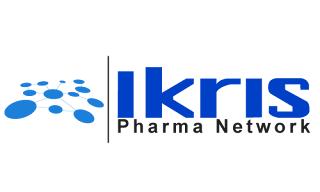Infectious Colitis Treatment Guidelines
Infectious Colitis occurs due to the viruses and bacteria. This type is generally a form of food poisoning. Bloody diarrhea and dehydration often occur with this type, which is considered to be a form of acute colitis.
What are the symptoms of infectious colitis?
The most commonly reported infectious colitis symptoms include:
- diarrhea
- headache
- body aches
- fever (less than 101.0 F)
- abdominal pain
- bloating
- abdominal cramps
- blood or mucus containing bowel movements
What Causes Infectious Colitis?
There are a variety of causes of infectious colitis and several types of variations. The typical causes include:
- illnesses
- infections
- poor hygiene
- weak immune system
- use of antibiotics
- consumption of contaminated water or food
- obstructions or blockages in the blood supply to the colon
- autoimmune reactions within your own body.
Can infectious colitis be cured?
Infectious colitis can be cured, often with the use of certain antibiotics.
Diagnosis: In order to diagnose the infectious colitis, a sample of your bowel movement is tested to identify the virus, bacteria or parasite which are responsible for causing your symptoms.
Apart from this, a procedure named colonoscopy is done in order to look inside your colon.
Treatment: The most important treatment is adequate hydration, but treatment also may include medications which are able to treat the virus, bacteria or parasite. There is a FDA approved medicine named vancomycin 500 mg tablet which is strongly recommended for treating the infectious colitis. It is specifically a glycopeptide antibiotic which functions by blocking the construction of the cell wall.
What infections is vancomycin used for?
Vancomycin is recommended to treat an infection of the intestines caused by the Clostridium difficile, which is responsible for causing watery or bloody diarrhea. It can be also used for treating staph infections which causes inflammation of the colon as well as small intestines.
What are the side effects of vancomycin?
The common side effects include allergic reactions, hearing loss, pain in the area of the injection, low blood pressure and bone marrow suppression.
What bacteria does vancomycin cover?
Vancomycin is specifically used against the enterococci (E. faecium and E. faecalis), gram-positive bacteria (in particular, Staphylococcus spp. and streptococci) and Neisseria spp.
What kind of antibiotic is vancomycin?
Vancomycin is a glycopeptide antibiotic. It acts by killing the bacteria in patient intestines.
How do I know if vancomycin is working?
The vancomycin either kills bacteria (bactericidal) or stops them from multiplying, without necessarily killing them (bacteriostatic). Either way, vancomycin begin to work from the moment you start receiving them, blocking or resisting the bacteria from dividing.
Does Vancomycin treat C diff?
Yes, Vancomycin is recommended by mouth as a treatment for severe Clostridium difficile colitis.
What is vancomycin price?
The drug is available at a reasonable price. Vial of 1 injection of vancomycin 500mg injection vancomycin injection price india can be purchased around INR 281.Any WHO-GDP & ISO is recommended in order to buy this medication. Prior to vancomycin order online, you must hold the valid/genuine prescription letter issued by your healthcare practitioner.
How to prepare vancomycin oral solution?
- Foremost, clean an area where you want to prepare the dose.
- Hands are washed with soap and water.
- You should clean the rubber stopper on the vancomycin bottle and sterile water bottle with an alcohol swab, and wait for the 30 seconds for the alcohol in order to dry.
- Need to attach the 18-gauge blunt fill needle to the tip of IV syringe and rotate it clockwise in order to tighten.
- Cap should be removed from the needle.
- The needle should be pushed through the rubber stopper on the sterile water bottle.
- Bottle should be turned upside down with the syringe in it.
- Make sure the needle's tip is in the sterile water.
- The plunger of the syringe should be slowly pulled down and drawed up of sterile water into the syringe.
- Bottle should be turned right side up and remove the needle and syringe from the sterile water bottle.
- The needle should be pushed through the rubber stopper on the vancomycin bottle and inject the sterile water into the bottle simply by pressing down the plunger.
- Remove the needle as well as syringe from the bottle of vancomycin. Put the syringe on the well cleaned surface, make sure not to touch the exposed needle to any surfaces.
- Bottle of vancomycin should be slightly shaken until the liquid is clear. This will prepare a 50 mg/mL solution of vancomycin
Important Tips In Order To Prevent Infectious Colitis:
Wash your hands well after you use the bathroom, change a diaper, or touch an animal.
Rinse vegetables and fruits in the running water.
Wash your sponges as well as dish towels periodically in the hot water.
Clean cutting knives, boards, countertops, and those areas where you prepare food.
Always drink treated water. Avoid drinking water from lakes, ponds or swimming pools.
Note: This article contains information about vancomycin. It does not contain all the possible information about this medication. Not all side effects are listed. In case you have any questions or want more information about vancomycin, discuss with your doctor.





No comments:
Post a Comment